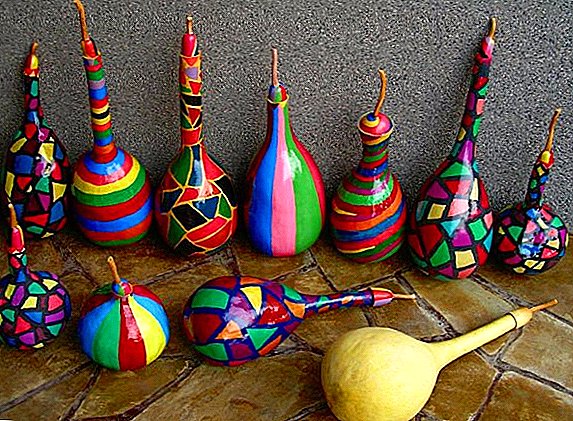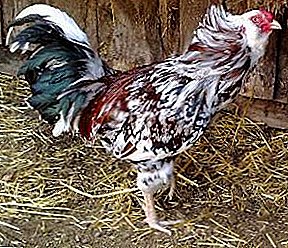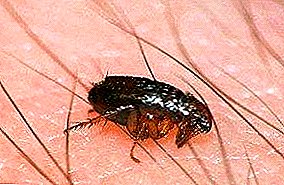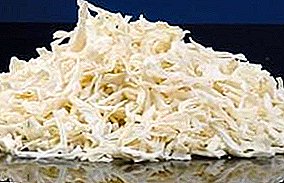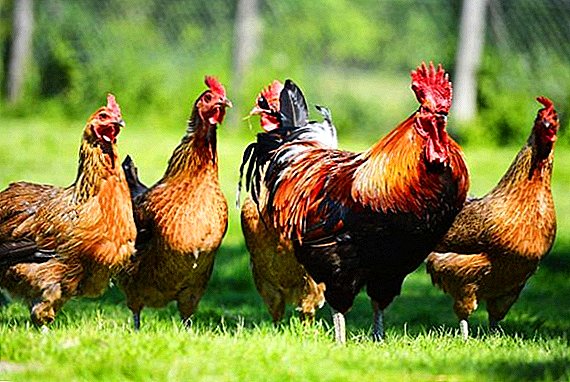 The first outbreaks of an infectious bursal disease were recorded in the Gamboro village, in the USA (1962) - the name of the city gave the name to the illness. Some time later, similar pathogens (virus of the Birnaviridae family) were found in Mexico, Belgium and England. Currently, the virus attacks all continents. Consider its features and ways to deal with it in the article.
The first outbreaks of an infectious bursal disease were recorded in the Gamboro village, in the USA (1962) - the name of the city gave the name to the illness. Some time later, similar pathogens (virus of the Birnaviridae family) were found in Mexico, Belgium and England. Currently, the virus attacks all continents. Consider its features and ways to deal with it in the article.
Gumboro disease
Numerous names of the disease, such as Gumboro disease, infectious neurosis, infectious bursitis, IBD, express a high degree of damage to the vital organs of the chicken herd in a short time. 
The primary goal of the virus is to destroy leukocytes in the organs of the immune system:
- factory bag;
- thyroid gland;
- spleen;
- almond shape.
They increase and acquire a color from light gray to dark brown, urates (uric acid stones consisting of crystals of uric acid salts) fill the tubules and ureters. A distinctive feature of the pathogen is its stability and duration of exposure in the environment.
Water, food, bird droppings save it for up to 56 days, utility equipment, infected clothing of contacting personnel, etc. - more than 120 days. The duration of the disease is 5-6 days, but it seizes a large number of livestock (40-100%) for a short period of time. Mortality reaches 20-40%. The suppression of leukocytes leads to the destruction of immunity and, as a consequence, the risk of other deadly diseases: colibacteriosis, coccidiosis, enteritis.
Sources of infection
The seriousness of the infection lies in the extremely rapid transmission of viral material between contactors (in this case birds), as well as through food, water, litter and inventory devices for the maintenance of chickens. Poultry farmers themselves can become peddlers of the virus. 
Infected birds
It is revealed that the carriers of the virus and at the same time its carriers in their natural habitat can be birds: ducks, turkeys, geese, guinea fowls, quails, sparrows and pigeons. Infection occurs by alimentary means, mucous membranes of the mouth and nose, conjunctiva of the eyes are involved. The carriers of the virus will be fluffy meals that have fallen on a hen, for example, from an infected sparrow that has accidentally flown into the chicken yard.
Important! Gamborough's disease is considered to be highly contagious: up to 100% of birds in one group can be affected by an illness, while 40-60% die.
Diseased chickens become a source of infection, as they emit the pathogen with droppings, infect food, water, bedding material, ancillary equipment.
Stern
Infected feeds are transported throughout the room (and further) not only by chickens, but also by pests (mice, rats), which makes it difficult to localize the source of infection. Keep the feed quality and purity. 
Symptoms
It is important to note that Gumbore’s disease has two types of illness:
- clinical;
- subclinical (hidden).
Find out why chickens are dying, and how to treat diseases of domestic chickens.
Symptoms of infectious bursitis include:
- severe diarrhea whitish-yellow color;
- ruffled plumage;
- weakness and depression of birds (depression);
- chills;
- significant loss of appetite (refusal of feed);
- signs of incoordination (in some cases);
- severe itching around cloaca (frequent);
- dehydration;
- susceptibility to pathogens.
 The subclinical, or hidden, form of Gumboro disease does not have pronounced symptoms of manifestation, but it is considered more dangerous. It includes:
The subclinical, or hidden, form of Gumboro disease does not have pronounced symptoms of manifestation, but it is considered more dangerous. It includes:- depressed state;
- growth retardation;
- immunity immunity sick birds.
Did you know? The egg shell is endowed with a protective coating that prevents the penetration of harmful bacteria inside. Do not wash the eggs with water until cooking.
Yet the final diagnosis can be confirmed only by laboratory tests that are aimed at detecting the virus, identifying it, and detecting antibodies in the blood.
Treatment
The causative agent of IBB is relatively stable to aggressive environmental factors. Laboratory tests established his death only at 70 ° C in 30 minutes. Lower temperatures require a longer time to maintain the temperature. The virus is immune to chloroform, trypsin, ether. Destruction is observed when processing 5% formalin, chloramine, caustic soda solution.  There is no special treatment for infectious bursitis. Vaccination is indicated as the main method of counteracting undesirable outbreaks. Apply live and inactivated vaccines. The primary condition for success in combating the disease is timely detection of the outbreak and isolation of sick stock. The weakest sick birds must be destroyed.
There is no special treatment for infectious bursitis. Vaccination is indicated as the main method of counteracting undesirable outbreaks. Apply live and inactivated vaccines. The primary condition for success in combating the disease is timely detection of the outbreak and isolation of sick stock. The weakest sick birds must be destroyed.
The remaining diseased chickens determined in another room. Infected territory is cleaned and several times treated with formalin, phenol and other special means. Garbage material (bedding, food residues) must be destroyed. The disease does not depend on the breed and age of chickens, occurs at any time of the year and is manifested in different climatic conditions.
Did you know? If the egg is rotten, it must be removed immediately from the others, otherwise others will also soon deteriorate.
Vaccination
With the threat of the spread of Gumbore disease, vaccination is of paramount importance. The most common vaccines consider:
- inactivated vaccine from strain BER-93;
- virus vaccines from strains UM-93 and VG-93;
- Gallivac IBD (France);
- inactivated vaccines N.D.V. + I.B.D + I..B. and quadratin N.D.V. + I..B.D + I..B. + Reo and NECTIV FORTE (Israel).
 Poultry houses the date of vaccination is determined by special formulas (Cohaven, Deventora). Vaccination is aimed primarily at the preservation of lymphoid tissue and its full development. Mother's antibodies are present in the egg and help protect the young during the month (approximately).
Poultry houses the date of vaccination is determined by special formulas (Cohaven, Deventora). Vaccination is aimed primarily at the preservation of lymphoid tissue and its full development. Mother's antibodies are present in the egg and help protect the young during the month (approximately).Prevention
Preventive measures help to prevent the outbreak of infectious bursitis, or to minimize possible losses during infection. A number of actions include:
- periodic sanitary and hygienic measures, in accordance with existing standards;
- limiting contacts of birds of different ages;
- conducting preventive vaccination in disadvantaged farms;
- food quality and purity standards;
- carrying out measures for the destruction of rodents and parasitic insects (lice, feathers, etc.);
- sick representatives are immediately isolated in a separate room or destroyed.
 The farm in which the disease is found is declared unfavorable. Birds are taken out, and the farm is completely disinfected. Good are the farmsteads where the bursal disease is not fixed during the year of work.
The farm in which the disease is found is declared unfavorable. Birds are taken out, and the farm is completely disinfected. Good are the farmsteads where the bursal disease is not fixed during the year of work.Important! Paper and cardboard equipment, inventory, materials that can not be washed should not be used for future generations. They are subject to destruction.
It is important not only to strive for profit, but to meticulously and closely monitor the chicken population, ensuring proper living conditions for it, and the results of hard work will soon appear in the form of tasty and healthy products derived from this bird.



